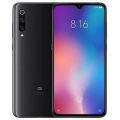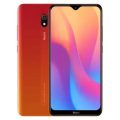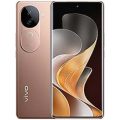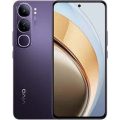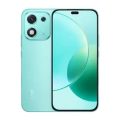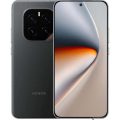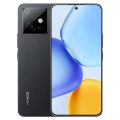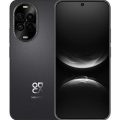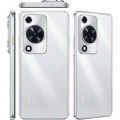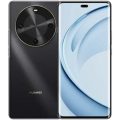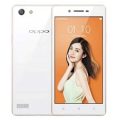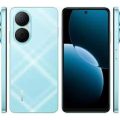Xiaomi 13







-
Released: 2022, December 14
-
Operating System: Android 13, MIUI 14
-
Display: 6.36" 1080x2400 pixels
-
Camera: 50MP 4320p
-
RAM: 8/12GB RAM Snapdragon 8 Gen2
-
Battery: 4500mAh Li-Po
Specifications
Prices
| Unofficial Unofficial |
12GB 256GB ৳1,03,000 / 12GB 512GB ৳1,20,000 |
Launch
| Announced Announced | 2022, December 11 |
| Status Status | Available. Released 2022, December 14 |
Network
| Technology Technology | GSM / CDMA / HSPA / EVDO / LTE / 5G |
| 2G 2G |
GSM 850 / 900 / 1800 / 1900 - SIM 1 & SIM 2 CDMA 800 |
| 3G 3G |
HSDPA 850 / 900 / 1700(AWS) / 1900 / 2100 CDMA2000 1xEV-DO |
| 4G 4G |
1, 2, 3, 4, 5, 7, 8, 12, 17, 18, 19, 26, 34, 38, 39, 40, 41, 42 |
| 5G 5G |
1, 3, 5, 8, 28, 41, 77, 78, 79 SA/NSA |
| Speed Speed | HSPA 42.2/5.76 Mbps, LTE-A, 5G |
| GPRS GPRS | |
| EDGE EDGE |
Body
| Dimensions Dimensions | 152.8 x 71.5 x 8.0 mm or 8.1 mm |
| Weight Weight | 185 g or 189 g (6.53 oz) |
| Build Build | Glass front (Gorilla Glass Victus), glass back (Gorilla Glass 5), aluminum frame |
| SIM SIM |
Dual SIM (Nano-SIM, dual stand-by) |
| Water Resistant |
IP68 dust/water resistant (up to 1.5m for 30 mins) |
Display
| Type Type | AMOLED capacitive touchscreen, 1B colors |
| Size Size | 6.36 inches, 97.7 cm2 (~89.4% screen-to-body ratio) |
| Resolution Resolution | 1080 x 2400 pixels, 20:9 ratio (~414 ppi density) |
| Protection Protection | Corning Gorilla Glass 5 |
| Refresh Rate Refresh Rate | 120Hz |
| Features Features | Dolby Vision, HDR10+, 1200 nits (HBM), 1900 nits (peak) |
Platform
| Operating System OS => Every computer system run on a base software called Operating System (OS). Operating System controls all basic operations of the computer (such as smartphone, PDAs, tablet computers and other handheld devices). The Operating System allows the user to install and run third party applications (apps), apps are used to add new functionality to the device. | Android 13, MIUI 14 |
| Chipset Chipset |
Qualcomm SM8550 Snapdragon 8 Gen 2 (4 nm) |
| CPU CPU |
Octa-core (1x3.2 GHz Cortex-X3 & 2x2.8 GHz Cortex-A715 & 2x2.8 GHz Cortex-A710 & 3x2.0 GHz Cortex-A510) |
| GPU GPU |
Adreno 740 |
Memory
| Card slot Card slot | No |
| Internal Internal | 128/256/512 GB |
| RAM RAM | 8/12 GB |
Main Camera
| Back Back |
50 MP, f/1.8, 23mm (wide), 1/1.49", 1.0µm, PDAF, OIS 10 MP, f/2.0, 75mm (telephoto), 1/3.75", 1.0µm, PDAF, OIS, 3.2x optical zoom 12 MP, f/2.2, 15mm, 120˚ (ultrawide), 1/3.06", 1.12µm |
| Features Features | Dual-LED dual-tone flash, HDR, panorama |
| Video Video |
8K@24fps (HDR), 4K@30/60fps (HDR10+), 1080p@30/120/240/960fps, 720p@1920fps, gyro-EIS |
Selfie camera
| Front Front |
32 MP, f/2.5, 26mm (wide), 0.7µm |
| Features Features | HDR, panorama |
| Video Video |
1080p@30fps, 720p@120fps |
Sound
| Alert Types | Vibration, MP3, WAV ringtones |
| Loudspeaker | Yes, with stereo speakers |
| 3.5 mm jack 3.5 mm jack | No 24-bit/192kHz audio Tuned by Harman Kardon |
Connectivity
| WLAN WLAN | Wi-Fi 802.11 a/b/g/n/ac/6 or 6e (market dependent), dual-band, Wi-Fi Direct |
| Bluetooth Bluetooth is a wireless communications technology for exchanging data between mobile phones, headsets, computers and other network devices over short distances without wires, Bluetooth technology was primarily designed to support simple wireless networking of personal consumer devices. | 5.3, A2DP, LE |
| GPS GPS The Global Positioning System is a satellite-based radio navigation system, GPS permits users to determine their position, velocity and the time 24 hours a day, in all weather, anywhere in the world, In order to locate your position, your device or GPS receiver must have a clear view of the sky. | GPS (L1+L5), GLONASS (L1), BDS (B1I+B1c+B2a), GALILEO (E1+E5a), QZSS (L1+L5), NavIC (L5) |
| NFC NFC (Near field communication) is a set of standards for smartphones and similar devices to establish peer-to-peer radio communications with each other by touching them together or bringing them into proximity, usually no more than a few inches. | |
| FM Radio | No |
| USB | USB Type-C 2.0, USB On-The-Go |
| Infrared port Infrared connectivity is an old wireless technology used to connect two electronic devices. It uses a beam of infrared light to transmit information and so requires direct line of sight and operates only at close range. |
Features
| Sensors Sensors are electronic components that detects and responds to some type of input from the physical environment. The specific input could be light, heat, motion, moisture, pressure and location, The output is generally a signal that is converted to use in computing systems, a location sensor, such as a GPS receiver is able to detect current location of your electronic device. |
Fingerprint (under display, optical), accelerometer, proximity, gyro, compass, color spectrum |
| Messaging Messaging | SMS(threaded view), MMS, Email, Push Email, IM |
| Browser Web Browser => a web browser is a software application used to locate, retrieve and display content on the World Wide Web, including Web pages, images, video and other files, The primary function of a web browser is to render HTML, the code used to design or markup webpages. | HTML5 |
| Java Support Java for Mobile Devices is a set of technologies that let developers deliver applications and services to all types of mobile handsets, ranging from price efficient feature-phones to the latest smartphones. Java is currently running on over 3 billion phones worldwide, and growing. It offers unrivaled potential for the distribution and monetization of mobile applications. |
Battery
| Battery Type Battery Type => Cell phones run on various kinds of batteries depending on the manufacturer, phone size or shape and features. There are basically four types of cell phone batteries => Lithium Polymer, Lithium Ion, Nickel Metal Hydride and Nickel Cadmium. | Non-removable Li-Po |
| Capacity Battery Capacity is a measure (typically in Amp-hr) of the charge stored by the battery, and is determined by the mass of active material contained in the battery. The battery capacity represents the maximum amount of energy that can be extracted from the battery under certain conditions. | 4500 mAh |
| Charging Wireless Charging (Inductive Charging) uses an electromagnetic field to transfer energy between two objects. This is usually done with a charging station. Energy is sent through an inductive coupling to an electrical device, which can then use that energy to charge batteries or run the device. |
67W wired, PD3.0, QC4, 100% in 39 min (advertised) 50W wireless, 100% in 53 min (advertised) 10W reverse wireless |
| Fast Charging Fast Charging | Yes |
More
| Made by Made by | China |
| Colors |
White, Black, Flora Green, Mountain Blue, Red, Blue, Yellow, Green, Gray |

Xiaomi 13 Review — A Balanced Flagship for the Bangladeshi Market
The smartphone market in Bangladesh is rapidly maturing. From budget devices to premium flagships, consumers are now spoiled for choice. In this competitive environment, Xiaomi has earned a reputation as a company that brings flagship-level features at a relatively competitive price point. While brands like Samsung, Apple, and OnePlus dominate the premium category, Xiaomi has been consistently gaining ground by combining innovation, performance, and affordability. One of the models that perfectly demonstrates this balance is the Xiaomi 13.
In this review, we will analyze the Xiaomi 13 from the perspective of Bangladeshi users — covering price, design, display, performance, camera, software, battery life, durability, pros and cons, and overall value.
1. Price and Availability in Bangladesh
The Xiaomi 13 is a flagship smartphone, but it is slightly more affordable compared to the ultra-premium models like the Xiaomi 14 Pro or Samsung Galaxy S24 Ultra. In Bangladesh, the Xiaomi 13 is available in the price range of BDT 85,000 to BDT 95,000, depending on the RAM and storage configuration, as well as whether the unit is officially imported or brought in through third-party sellers.
Variants in the local market typically include:
- 8GB RAM + 256GB storage — around BDT 85,000.
- 12GB RAM + 256GB storage — around BDT 90,000–92,000.
- 12GB RAM + 512GB storage — around BDT 95,000.
Since Xiaomi’s flagship models are not officially distributed at a large scale in Bangladesh like Samsung, buyers often rely on trusted resellers and local showrooms. This means warranty support may vary. Consumers are encouraged to purchase from a reliable source with after-sales service.
2. Design and Build Quality
The Xiaomi 13 feels and looks premium right out of the box. It features a glass front and back with an aluminum frame, though there is also a version with a vegan leather back. Its design language is clean, modern, and minimalistic, resembling other top-tier flagship phones.
- Dimensions: 152.8 x 71.5 x 7.98 mm
- Weight: ~185g (lightweight compared to many modern flagships)
For Bangladeshi users, this is an excellent size. Many consumers find ultra-large phones difficult to handle with one hand, especially when traveling on crowded buses or using the phone in one hand while commuting. The Xiaomi 13 strikes a balance between portability and screen size.
Another big plus is its IP68 dust and water resistance, which ensures the device can withstand splashes, light rain, or dust exposure — very practical in Bangladesh’s climate.
3. Display — Compact but Brilliant
The Xiaomi 13 comes with a 6.36-inch AMOLED display that supports FHD+ resolution (1080 x 2400 pixels). While it is smaller compared to the Pro model, it is extremely sharp and vibrant.
- Refresh Rate: 120Hz (adaptive)
- Brightness: Peak 1900 nits — excellent for outdoor visibility
- HDR Support: HDR10+, Dolby Vision
For Bangladeshi consumers, this translates to:
- Clear visibility under the strong sunlight of Dhaka or Chattogram.
- Excellent viewing experience for watching YouTube, Netflix, and cricket matches.
- Smooth animations and scrolling while gaming or browsing.
The slightly smaller display also makes it more power-efficient compared to larger flagship models.
4. Performance — Snapdragon Power
Performance is one of the strongest areas of the Xiaomi 13. It is powered by the Qualcomm Snapdragon 8 Gen 2 chipset, paired with LPDDR5X RAM and UFS 4.0 storage.
Real-world usage in Bangladesh:
- Gamers will love this phone. Titles like PUBG Mobile, Free Fire, and Genshin Impact run smoothly at high graphics settings with stable frame rates.
- Students and professionals can multitask with ease, switching between Zoom classes, Microsoft Office apps, and social media without any lag.
- Content creators can shoot and edit 4K or even 8K videos directly on the device.
Thermal management is also improved compared to earlier Xiaomi models, meaning less overheating during long gaming sessions.
5. Camera System — Leica Collaboration
One of the major highlights of the Xiaomi 13 is its camera system. Xiaomi partnered with Leica, a brand known for professional photography, to deliver stunning camera performance.
Camera setup:
- 50 MP main sensor (wide, OIS, Leica color tuning)
- 10 MP telephoto (3.2x optical zoom)
- 12 MP ultra-wide
- 32 MP front camera
Photography in Bangladesh:
- Daytime shots: Crisp, natural, and detailed photos — perfect for capturing street scenes, landscapes, and portraits.
- Low-light performance: Bright and clear photos even in dimly lit places like restaurants or rural areas without strong lighting.
- Telephoto lens: Great for zooming during cricket matches or concerts in Dhaka.
- Ultra-wide lens: Useful for capturing group photos during family events, weddings, or tours.
- Selfie camera: Produces high-quality images, perfect for students and young people active on social media.
Video recording goes up to 8K resolution with good stabilization, making the Xiaomi 13 a solid option for vloggers and content creators in Bangladesh.
6. Battery Life and Charging
The Xiaomi 13 packs a 4500 mAh battery, which may not sound massive compared to some competitors, but it is optimized for efficiency thanks to the Snapdragon 8 Gen 2 and AMOLED panel.
- 67W wired fast charging: 0 to 100% in about 40 minutes.
- 50W wireless charging: Among the fastest in the industry.
- 10W reverse wireless charging: Can charge accessories like wireless earbuds.
For Bangladeshi users, this charging speed is extremely practical. Even if you forget to charge overnight, you can top it up quickly before leaving home.
7. Software Experience
The Xiaomi 13 runs on MIUI 14 (based on Android 13) and is upgradable to HyperOS (based on Android 14).
Pros of the software:
- Smooth and customizable interface.
- Enhanced performance compared to older MIUI versions.
- Good update policy: 3–4 years of OS updates and 5 years of security patches.
Cons:
- Some pre-installed apps (bloatware) that users may not need, though most can be uninstalled.
- Notification management is slightly less polished compared to Samsung or stock Android.
For Bangladeshi users who love customization, MIUI/HyperOS provides more options than iOS or even Samsung’s One UI.
8. Durability and Practical Use in Bangladesh
Durability matters a lot in Bangladesh, where phones are frequently exposed to dust, heat, and rain. The Xiaomi 13 handles these challenges quite well:
- IP68 water/dust resistance makes it reliable during monsoon rains.
- Strong glass protection reduces risks from accidental drops.
- Its compact design makes it easier to carry compared to bulky flagships.
9. Pros and Cons
Pros:
✔ Compact yet premium design.
✔ Brilliant AMOLED display with 120Hz refresh rate and 1900 nits brightness.
✔ Snapdragon 8 Gen 2 performance — excellent for gaming and multitasking.
✔ Leica-powered cameras that deliver flagship-quality photos.
✔ Fast wired and wireless charging.
✔ IP68 water and dust resistance.
Cons:
✘ Expensive for average Bangladeshi consumers.
✘ Smaller battery compared to some rivals.
✘ Limited official availability and after-sales service.
✘ Some software bloatware.
10. Final Verdict
The Xiaomi 13 is a balanced flagship that offers high-end performance, professional-grade cameras, fast charging, and a compact design — all at a relatively more affordable price compared to ultra-premium devices.
For Bangladeshi users who want a premium smartphone experience without spending over BDT 120,000, the Xiaomi 13 is a fantastic choice. It competes well with Samsung Galaxy S23 and even Apple’s iPhone 14, making it a true all-rounder.
It may not be the cheapest option, but it delivers immense value for money in the Bangladeshi market. Whether you are a student, a gamer, a professional, or a social media enthusiast, the Xiaomi 13 is designed to meet your needs.
Reviews
Disclaimer Note
We always try our best to keep our website content and information updated and correct, the material and information contained on our website is for general information purposes only, You should not rely upon the material and information as a basis for making any business, legal or any other decisions.

